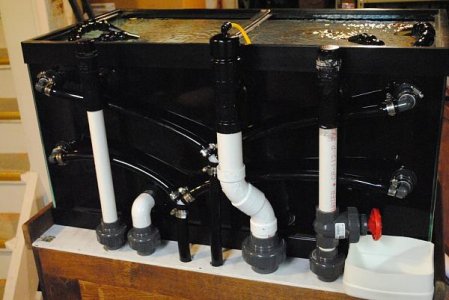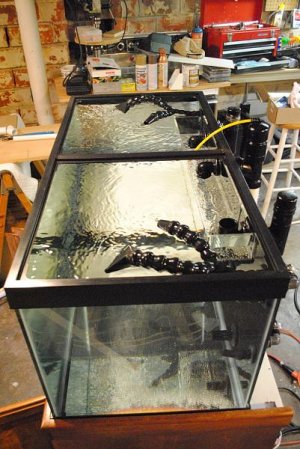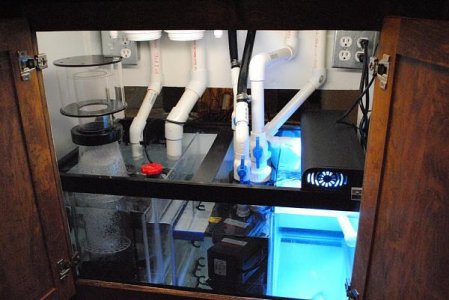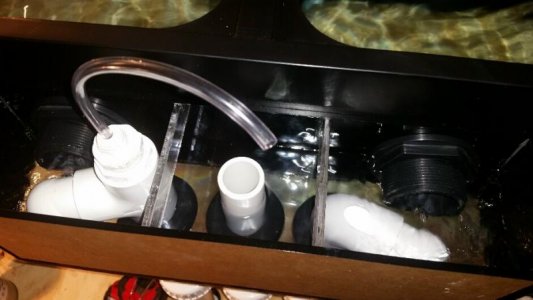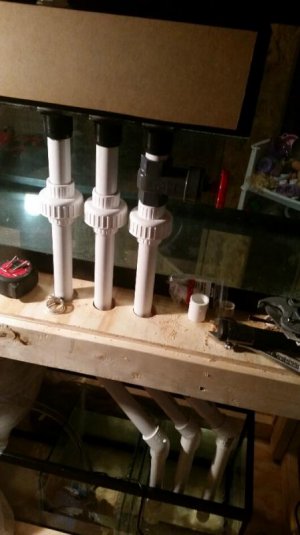I have a couple of questions. I'm getting ready to set up a 140 gallon system with a reef ready, center overflow. I know that this is not the most efficient at surface skimming, but it's what I'm stuck with. The center overflow has 3 - 1" drains and 2 - 3/4" returns, so I'd like to set it up in Bean Animal fashion. I understand that I should plumb with inch and a half pipe below the 1" bulkhead, but what about above? Also, does anyone have any idea how much flow this type of setup will have? I'm wanting to pick my return pump soon. Thanks.
What are the physics (or magic) that account for the difference?

